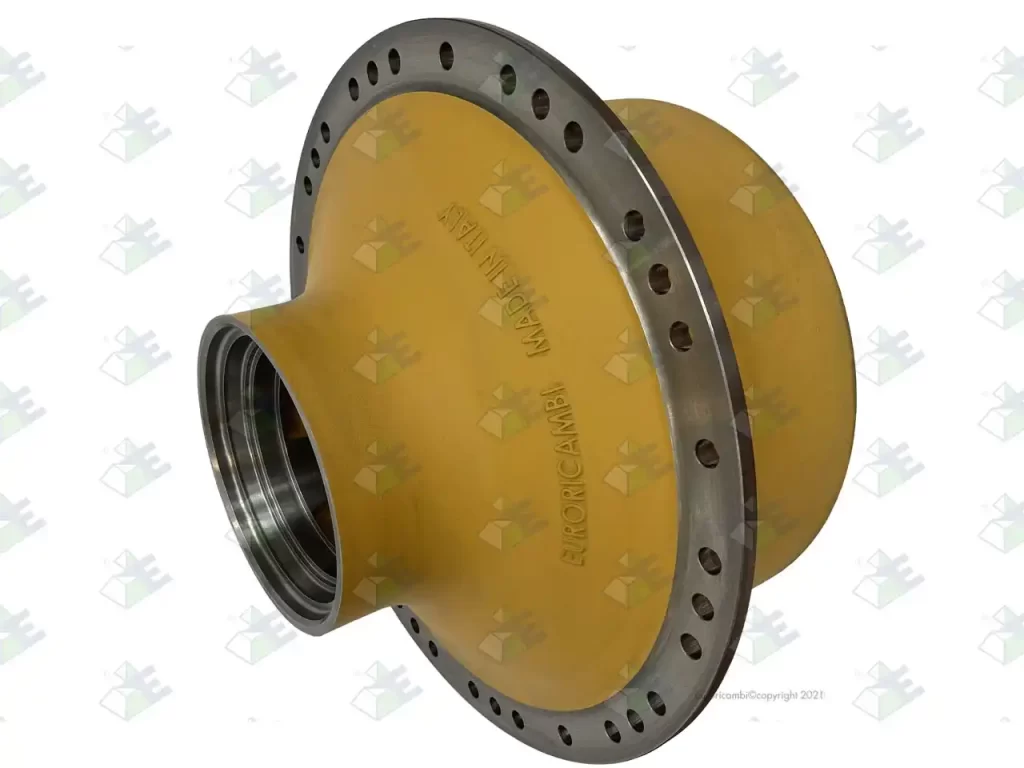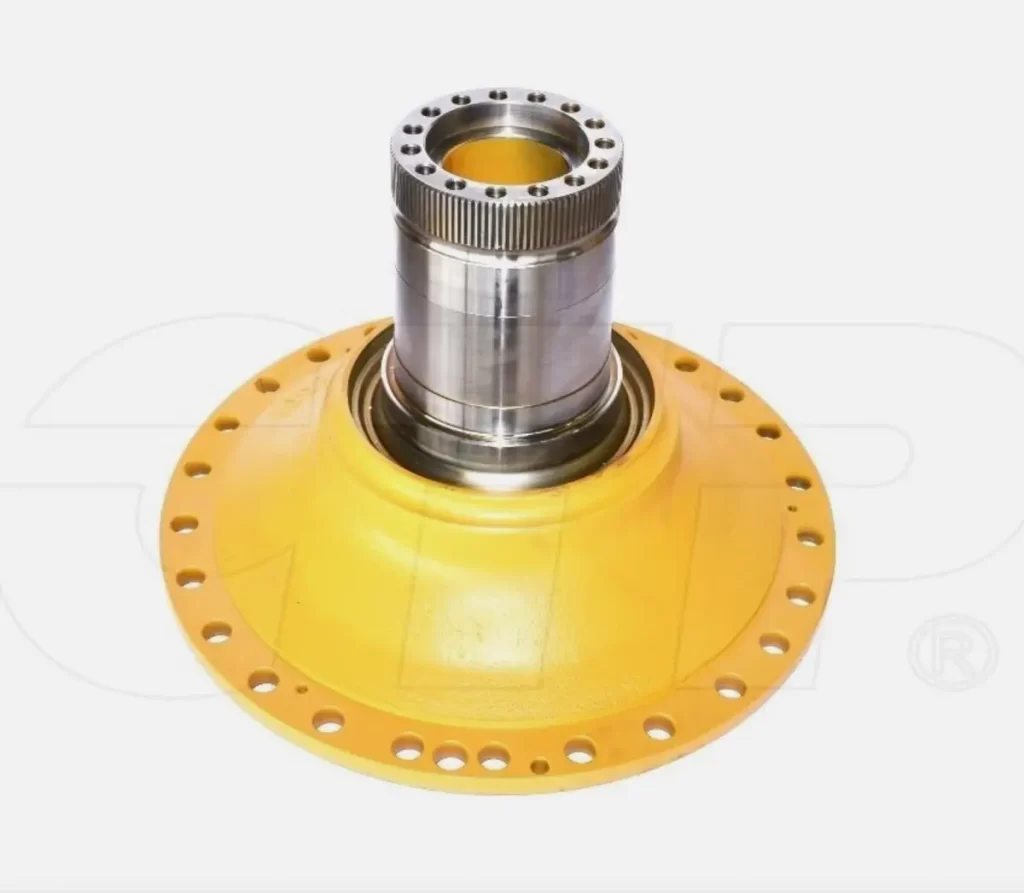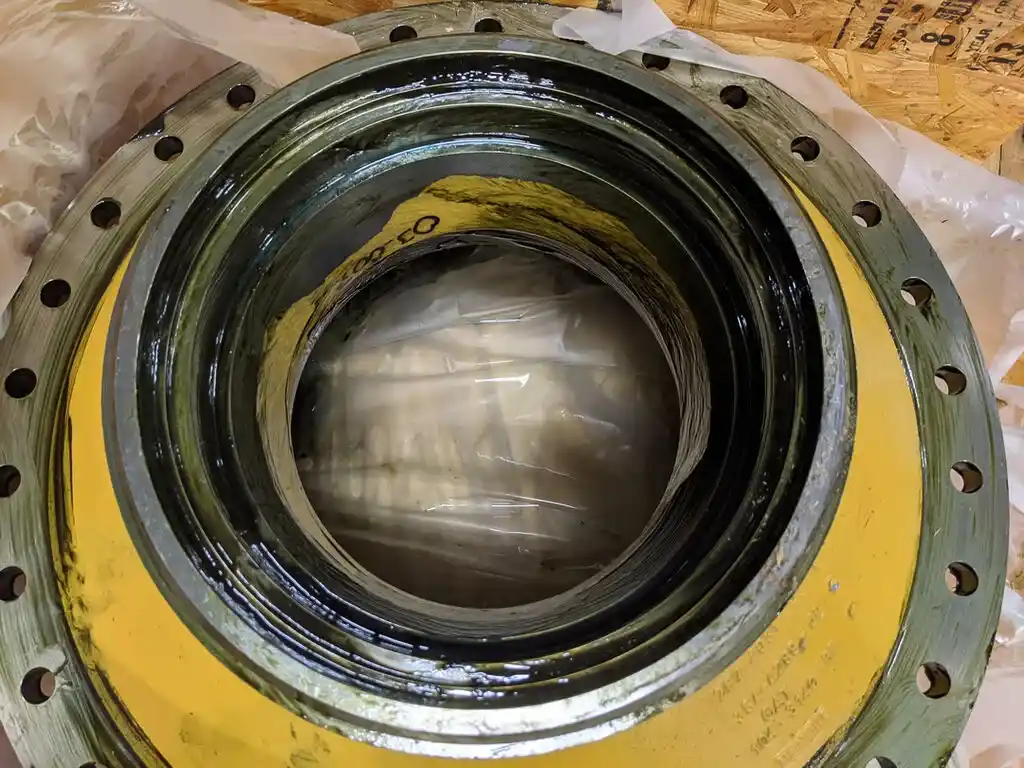Hub Sprocket: Function, Usage, and Maintenance in Heavy Equipment
Hub sprocket is a crucial component in the movement system of heavy machinery that uses tracks or chains. This gear-like part is responsible for driving the chain, allowing heavy vehicles to move steadily and under control on challenging terrains such as rocky or muddy grounds.

Main Functions of the Hub Sprocket
Here are the key functions of the hub sprocket in heavy equipment:
Driving the Chain
The hub sprocket turns the chain on heavy machinery, such as excavators and bulldozers, enabling them to move forward or backward.Maintaining Movement Stability
The hub sprocket ensures the chain movement remains stable, even when the heavy equipment is working in difficult or rough conditions.Transferring Power from Engine to Chain
The hub sprocket transfers the power generated by the engine to the chain system, allowing the heavy vehicle to move according to the propulsion generated.
Uses of Hub Sprocket in Heavy Industry
In various industries that rely on heavy machinery, such as construction, mining, and forestry, the hub sprocket plays a critical role. Here are some specific uses of the hub sprocket:
- Construction: In construction projects, the hub sprocket enables excavators and bulldozers to move across uneven ground, making it easier to perform heavy-duty tasks.
- Mining: In the mining industry, hub sprockets support the movement of heavy machinery operating in sandy or rocky areas.
- Forestry: Hub sprockets allow heavy machinery to operate stably on tough forest terrain, ensuring vehicles remain effective in their tasks.

Hub Sprocket Maintenance
To keep the hub sprocket functioning optimally, regular maintenance is essential. Here are some maintenance steps:
Visual Inspection: Regularly check the hub sprocket for wear or damage to the teeth. Small damage left unattended can lead to larger, more costly repairs.
Routine Lubrication: Ensure that the hub sprocket is well-lubricated to minimize friction between the chain and sprocket, preventing excessive wear.
Cleaning the Chain and Sprocket: Clean off dirt, dust, and sand that accumulate on the sprocket and chain to avoid damage caused by excessive friction.
Causes of Hub Sprocket Damage
Hub sprockets can become damaged due to various factors, such as:
- Excessive Friction: Inadequate lubrication can increase friction, leading to faster wear on the sprocket teeth.
- Overuse: Heavy machinery operated without sufficient breaks can cause premature wear on the sprocket.
- Harsh Terrain Conditions: Working in very rough environments, such as rocky or muddy terrain, can accelerate sprocket damage.
Hub Sprocket and Leading Heavy Equipment Brands
Several major heavy equipment brands use hub sprocket systems, including:
- Caterpillar: Excavators and bulldozers from Caterpillar rely on hub sprockets to ensure optimal track movement in various terrain conditions.
- Komatsu: Komatsu’s heavy machinery uses durable sprocket systems to maximize performance in construction and mining projects.
- Hitachi: Hitachi also uses hub sprockets in its heavy equipment to ensure reliability during field operations.
Conclusion: The Importance of Hub Sprocket
The hub sprocket is a vital component that ensures heavy machinery can operate smoothly across difficult terrains. Proper maintenance is crucial to ensure the vehicle’s optimal performance and minimize unwanted downtime.
If you’re experiencing issues with your hub sprocket or other components on your heavy equipment, SSC Works is here to help with professional repair and refurbishment services. We’ll ensure your heavy machinery continues to function effectively under all conditions.

